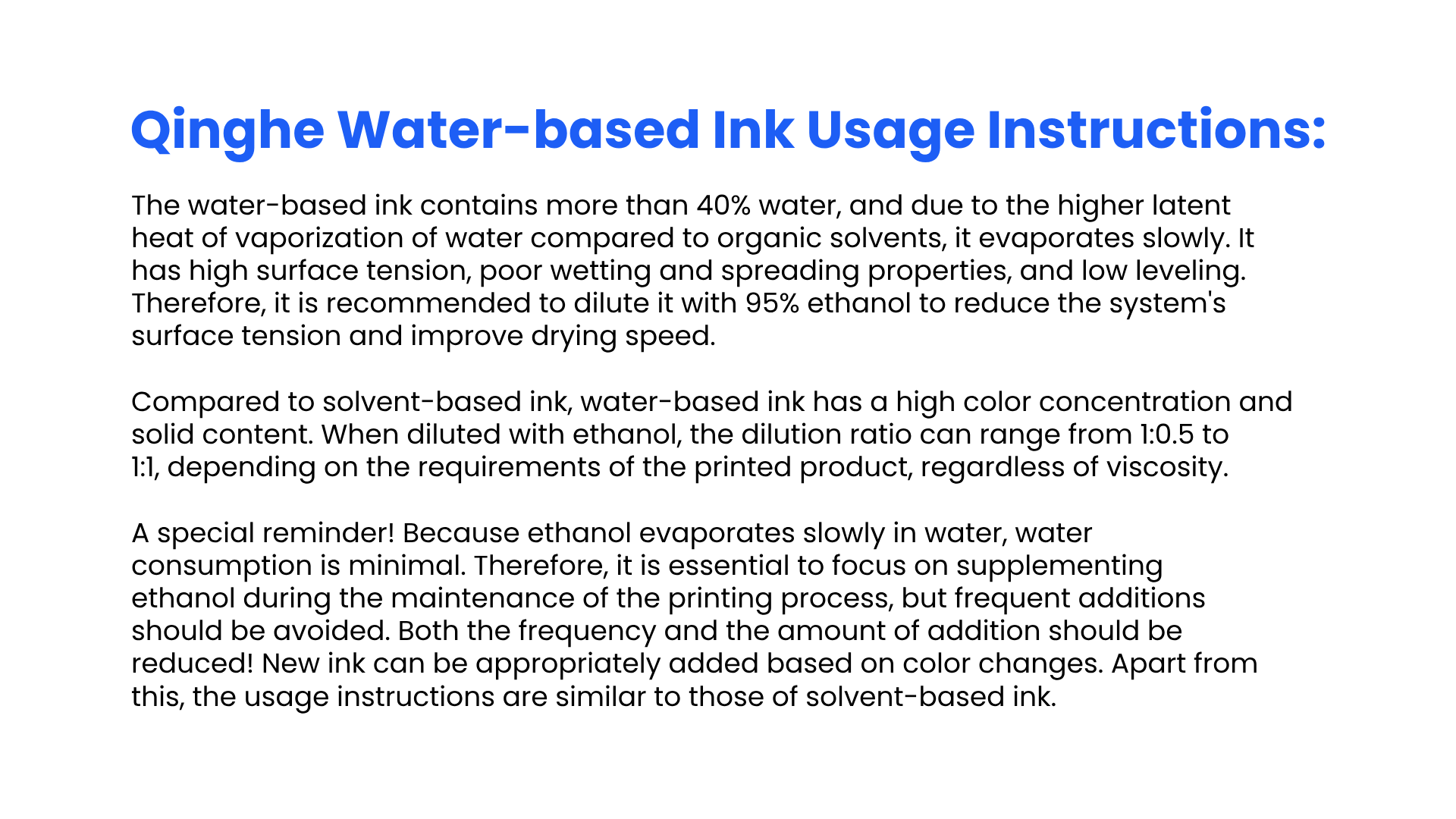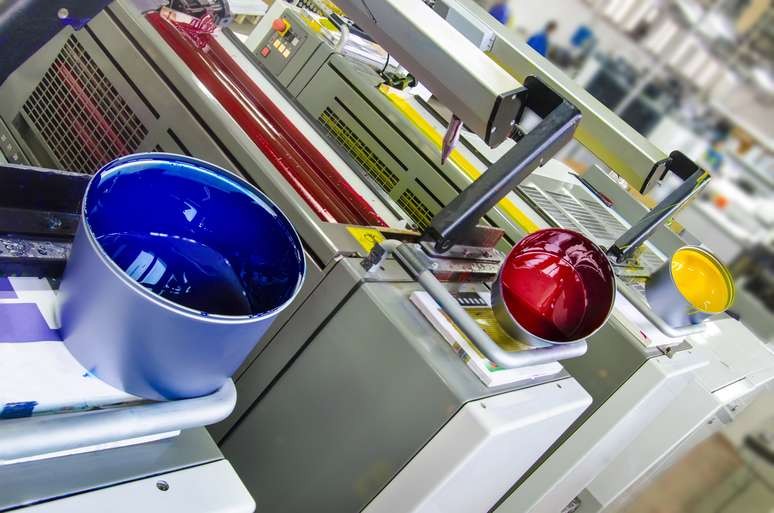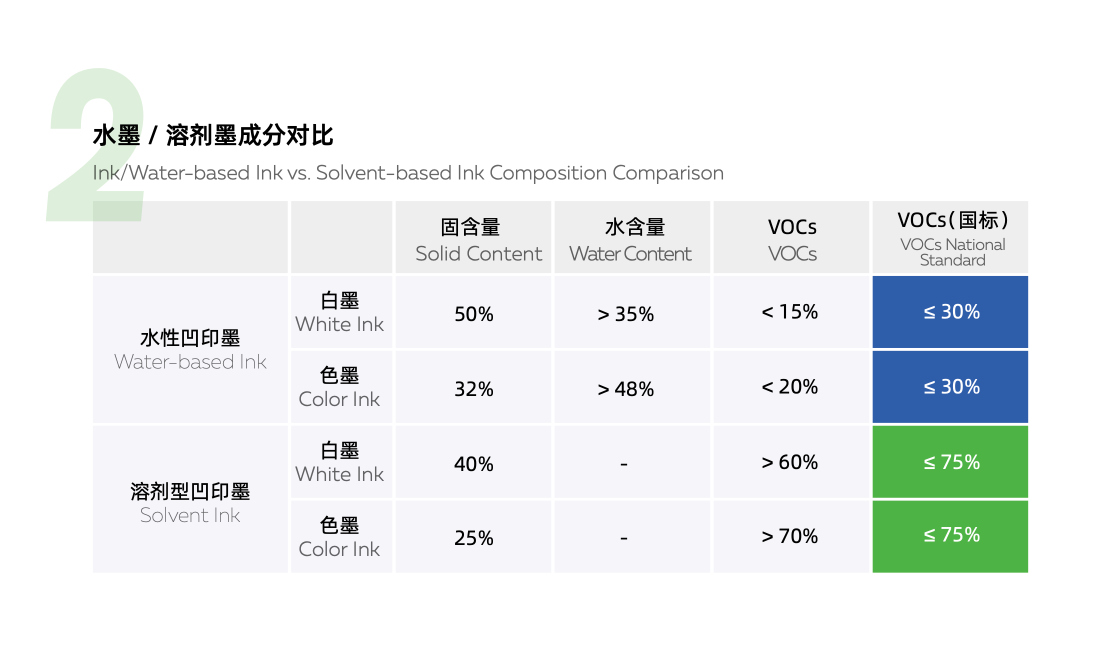Introduction

Are you ready to explore the world of water-based screen printing inks? As the demand for eco-friendly and sustainable printing solutions continues to rise, water-based inks have emerged as a popular choice for businesses and individuals alike. This shift towards water-based printing has paved the way for innovative companies like Qinghe Chemical to revolutionize the industry.
The Rise of Water Base Ink
The rise of water-based screen printing ink can be attributed to a growing awareness of environmental impact and a desire for more sustainable practices. Many printers are switching to water-based options, as traditional solvent-based inks pose health and environmental risks.
Benefits of Using Water Based Screen Printing Ink
Water-based screen printing inks do offer a significant advantage over traditional oil-based inks. Here's a breakdown of the key benefits:
- Rich Colors, Soft Feel: Water-based inks deliver vibrant colors that rival oil-based inks while producing a softer, more comfortable feel on fabric. This makes them ideal for garments like t-shirts and sweatshirts, where comfort is key.
- Eco-Friendly Champion: Unlike oil-based inks that contain harmful VOCs, water-based inks are free from harsh chemicals and heavy metals. This makes them a more sustainable choice and reduces the environmental impact of the printing process.
- Breathability Boost: Water-based inks create a more breathable print compared to oil-based inks. This allows for better air circulation, making garments more comfortable to wear, especially during hot weather or physical activity.
- Washing Machine Friendly: Water-based inks typically adhere well to fabrics even after multiple washes, making them a great choice for printed garments that need to withstand regular wear and tear.
- Safe for All: Since water-based inks are free from harmful chemicals, they are a safer option for printers and consumers alike. This is especially important for sensitive skin or applications like printing on baby clothes.
Water-based screen printing inks offer a winning combination of environmental responsibility, user comfort, and high-quality results. As sustainability becomes a growing concern, water-based inks will likely become the go-to choice for eco-conscious printers and consumers.
Qinghe Chemical: Pioneers in Water Based Inks
Qinghe Chemical has been at the forefront of developing high-quality water-based printing ink solutions that meet industry standards while prioritizing sustainability. Their commitment to innovation and eco-friendly practices has positioned them as pioneers in water-based inks.
Understanding Water Base Ink

Water based inks are revolutionizing the screen printing industry with their eco-friendly composition and vibrant results. Unlike traditional solvent-based inks, water based inks are free from harmful chemicals and provide a soft, breathable feel on garments. Their ability to produce high-quality prints on a variety of materials makes them stand out in the market.
What Sets Water Based Inks Apart
Water-based inks are revolutionizing the world of garment printing, offering a compelling alternative to traditional plastisol inks. Here's what makes them stand out:
- Fabric Fusion, Not Just Application: Unlike plastisol inks that sit on top of the fabric, water-based inks penetrate the fibers. This creates a print that becomes one with the garment, resulting in:
- Superior Softness: Water-based prints have a noticeably softer feel compared to plastisol's plastic-like texture. This makes them more comfortable to wear, especially on everyday clothing like T-shirts and sweatshirts.
- Enhanced Durability: Water-based inks' deeper penetration translates to better wash resistance. The colors won't crack or peel easily, ensuring your designs stay vibrant for longer.
- Eco-Friendly Champion: Water-based inks are free from harmful chemicals like PVC and VOCs, making them a sustainable choice. They contribute to a smaller environmental footprint compared to plastisol inks. This resonates with eco-conscious consumers and businesses that prioritize responsible practices.
- Cleaning Up Made Easy: Water is all you need! Water-based inks are a breeze to clean up compared to plastisol inks, which require harsh chemicals. This translates to:
- Safer Work Environment: Reduced exposure to harmful chemicals protects the health of printers and those handling the inks.
- Simplified Cleaning Process: Less time spent cleaning means more time spent printing, boosting productivity.
- Cost Savings: No need for expensive chemical cleaners, leading to lower operational costs.
- A Feast for the Eyes: Water-based inks can produce vibrant colors that rival plastisol inks. Additionally, their ability to create fine details allows for intricate designs and high-quality customization, making your garments unique.
Water-based inks are more than just an ink choice; they're a statement. They represent a commitment to comfort, sustainability, and high-quality printing. As environmental and health consciousness grows, water-based inks are poised to become the dominant force in eco-friendly garment printing.
The Environmental Impact of Water Based Printing
Water-based screen printing ink significantly reduces the environmental impact of the printing process. These eco-friendly inks contain fewer volatile organic compounds (VOCs) than traditional solvent-based inks, resulting in lower air pollution levels and a healthier work environment for printers. The use of water-based inks also minimizes hazardous waste disposal, making it a more sustainable option for businesses.
Water-based screen printing inks are also easier to clean, reducing the amount of water and chemicals needed for maintenance. This means less strain on water treatment facilities and a smaller overall environmental footprint. Additionally, water-based inks are often more vibrant and durable than their solvent-based counterparts, resulting in higher-quality prints that last longer. This can lead to less frequent reprints and ultimately less waste in the long run.
Advantages of Eco Friendly Screen Printing
Eco-friendly screen printing, using water-based inks, offers a multitude of advantages that extend far beyond just environmental benefits. Here's why it's a win for everyone involved:
For the Planet
- Reduced Environmental Impact: Water-based inks are free from harsh chemicals and heavy metals, minimizing pollution and contributing to a smaller carbon footprint. This aligns perfectly with the growing demand for sustainable practices.
For Printers
- Healthier Work Environment: The absence of harmful chemicals in water-based inks creates a safer workplace for printers, reducing exposure to harmful fumes.
- Simplified Cleaning: Water-based inks are water-soluble, making cleanup easier and faster than plastisol inks. This translates to increased productivity and potentially lower costs associated with cleaning supplies.
- Finer Details, Sharper Results: Water-based inks create intricate designs and sharp details, allowing for high-quality and visually stunning prints.
For Consumers
- Superior Comfort: Water-based inks produce prints that feel softer and more breathable on fabric than plastisol inks. This enhances the overall comfort of garments, especially for everyday wear.
- Long-Lasting Vibrancy: Don't be fooled by the "water-based" label! These inks produce rich, bold colors that rival their plastisol counterparts and maintain their brilliance even after multiple washes.
- Sustainable Style: Eco-conscious consumers appreciate brands that prioritize responsible practices. Eco-friendly printing allows them to wear their values while looking great.
The Future is Sustainable
Eco-friendly screen printing isn't just a trend; it's a necessary shift towards a more sustainable future for the printing industry and the planet. With its combination of environmental responsibility, user comfort, and high-quality results, eco-friendly screen printing is poised to become the standard for brands and printers alike.
Best Water Base Ink Options

When it comes to water based screen printing ink, Qinghe Chemical's Water Based Printing Ink stands out as a top performer in the industry. Their eco-friendly formula offers vibrant colors, excellent wash fastness, and superior printability on various fabrics. With their commitment to sustainable printing solutions, Qinghe Chemical's water based inks are the best choice for environmentally conscious businesses looking to switch to water based printing.
Qinghe Chemical's Water Based Printing Ink
Qinghe Chemical's Water Based Printing Ink is a game changer in the world of water based inks. Their innovative formula not only delivers exceptional color brilliance and durability but also meets strict environmental standards. This makes it an ideal choice for businesses looking to reduce their ecological footprint without compromising quality or performance.
Top Performers in Water Based Inks
In addition to Qinghe Chemical, several other top performers in the water-based inks market have gained recognition for their high-quality products. Companies like Green Galaxy and Matsui International have also developed advanced water-based screen printing ink options that offer excellent color saturation, and a soft hand feels while being environmentally friendly.
Why Water Based Inks Are the Best Choice
Water-based inks are gaining popularity for good reason—they offer a range of benefits that make them the best choice for modern screen printing operations. From their low impact on the environment to their ability to produce vibrant, long-lasting prints on various substrates, water-based inks are proving to be a superior alternative to traditional solvent-based options.
Printing with Water Based Inks

When it comes to successful printing with water-based inks, it's important to ensure that your screens are properly prepped and coated to prevent ink from seeping through. Additionally, using the right mesh count for your design is crucial in achieving crisp and clear prints. Lastly, always make sure to cure the prints properly to ensure durability and wash-fastness.
Tips for Successful Printing with Water Based Inks
Here are some key tips for achieving successful printing with water-based inks, building on the points you mentioned:
Prepping for Success
- Squeegee Selection: Water-based inks have a lower viscosity than plastisol inks. To ensure proper ink flow and application, choose a squeegee with a softer durometer (like 55-65 durometer) than what you might use with plastisol inks. You'll also want to use a slightly higher squeegee angle to maintain good contact with the screen and achieve a clean print.
- Environmental Control: Humidity is your friend! Water-based inks tend to dry faster than plastisol inks. Maintaining a slightly higher humidity level (around 60-70%) in your printing environment can help prevent the ink from drying prematurely on the screen, ensuring a smoother printing process.
- Mesh Matters: Water-based inks can work well with a wider range of mesh counts than plastisol inks. Generally, a higher mesh count (156-200 threads per inch) is recommended for detailed prints, while lower mesh counts (110-156) can be suitable for solid areas and underbases.
Optimizing Printability
- Additive Exploration: Experiment with different water-based ink additives to achieve specific results. Some common additives include:
- Retarders: Slow down drying time to prevent premature drying on the screen.
- Penetrants: Enhance ink absorption into the fabric, improving washfastness.
- Thickeners: Increase ink viscosity for better control during printing.
- Softeners: Improve the hand feel of the printed garment.
- Underbase Magic: Consider using an underbase with water-based inks, especially for dark fabrics. This creates a solid foundation for the topcoat, ensuring vibrant colors and better opacity.
- Test and Refine: Always test your inks and additives on scrap fabric before printing on your final garments. This allows you to fine-tune your process and achieve optimal results.
By following these tips and understanding the unique properties of water-based inks, you can achieve high-quality, sustainable prints that are both visually stunning and comfortable to wear. Remember, water-based inks offer a fantastic alternative to traditional plastisol inks, and with a little practice, you can master the process and create eco-friendly garments that will impress your customers.
Overcoming Challenges in Water Based Screen Printing
One of the main challenges in water based screen printing is achieving opacity on dark garments. However, this can be overcome using under-basing techniques or specialty white inks designed specifically for dark fabrics. Another challenge is preventing ink from drying out on the screen during long print runs, which can be managed by regularly misting the screens with water or using a humidifier.
Another challenge in water based screen printing is maintaining consistent color vibrancy and saturation across different fabric types. This can be addressed by carefully selecting the right ink formulations for each type of fabric, as well as adjusting printing techniques to ensure even coverage and color intensity. Additionally, achieving fine details and intricate designs can be challenging with water based inks, but this can be overcome by using higher mesh screens and mastering the art of proper ink viscosity and application. By experimenting with different variables and staying attentive to detail, high quality results can be consistently achieved with water based inks in screen printing.
Achieving High Quality Results with Water Based Inks
To achieve high-quality results with water-based inks, it's important to invest in proper training for your staff to ensure they understand ink properties and printing techniques. Additionally, high-quality screens and mesh can help achieve finer details and sharper prints. Finally, conducting regular maintenance on your equipment can help ensure consistent print quality.
Investing in the latest water based ink technology can also help achieve high quality results. New advancements in ink formulations and additives can improve color vibrancy, wash fastness, and overall print durability. By staying up to date with the latest innovations in water based inks, printers can ensure that they use the most effective products for their specific printing needs. This proactive approach to ink selection can ultimately lead to higher quality prints and increased customer satisfaction.
The Future of Water Based Printing

Innovations in Water Based Inks
As the demand for eco-friendly printing solutions grows, the industry sees exciting innovations in water based inks. Manufacturers are constantly developing new formulations that offer improved color vibrancy, increased wash fastness, and enhanced printability on a wide range of substrates. These advancements are revolutionizing how we think about water based screen printing ink, making it a viable alternative to traditional solvent-based options.
Emerging Trends in Water Based Printing
One of the key emerging trends in water based printing is the use of specialized additives and pre-treatments to expand the capabilities of these inks. This includes formulations that can achieve a softer hand feel, increased opacity on dark garments, and improved resistance to dye migration. Additionally, there is a growing focus on developing water based inks that can be cured at lower temperatures, reducing energy consumption and opening up new possibilities for printing on heat-sensitive materials.
In addition to these advancements, there is a growing emphasis on the development of water based printing inks that offer improved wash fastness and color vibrancy, ensuring that printed designs maintain their quality and appearance over time. This is particularly important for textile and garment printing, where durability and longevity are key factors for both manufacturers and consumers. By addressing these concerns, water based printing inks are becoming a more attractive option for a wider range of applications, further driving the demand for innovation in this sector.
Qinghe Chemical's Commitment to Sustainable Printing Solutions
Qinghe Chemical has been at the forefront of sustainable printing solutions for years, and their commitment to developing high-quality water based inks is unwavering. They continue to invest in research and development to push the boundaries of what is possible with eco-friendly screen printing ink. Their dedication to providing environmentally conscious printer options underscores their position as industry leaders in sustainable innovation.
Embrace the Future with Qinghe Chemical

Making the Switch to Water Based Printing
If you're looking to make a positive impact on the environment while still achieving high-quality results, consider switching to water-based printing. With their eco-friendly properties and vibrant color options, water-based inks offer a sustainable solution for all your screen printing needs.
The Environmental Impact of Water Based Inks
By choosing water-based inks for your screen printing projects, you're actively reducing your carbon footprint and minimizing the use of harmful chemicals. This environmentally conscious choice benefits the planet and sets a new standard for sustainable printing practices in the industry.
Qinghe Chemical is at the forefront of innovation in water-based inks, offering top-performing products that deliver exceptional results while prioritizing sustainability. With its commitment to providing eco-friendly screen printing solutions, Qinghe Chemical is leading the way towards a more environmentally friendly future for the printing industry.

